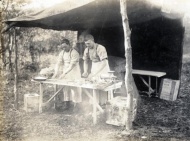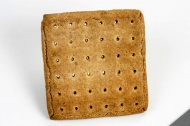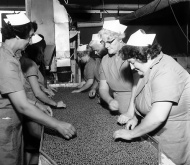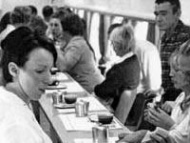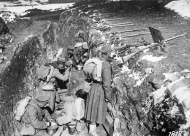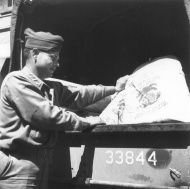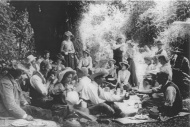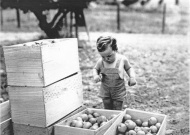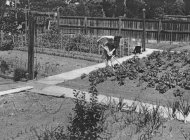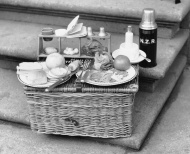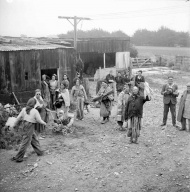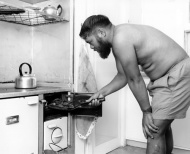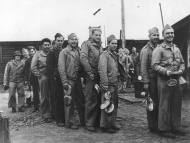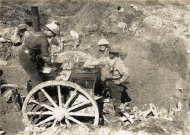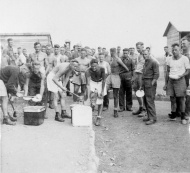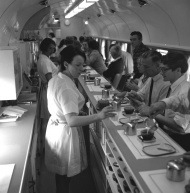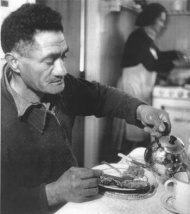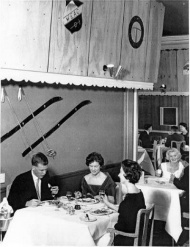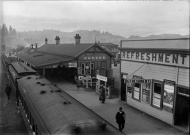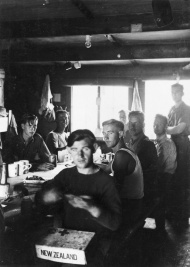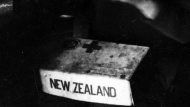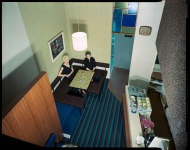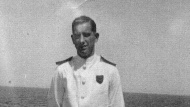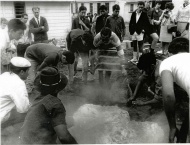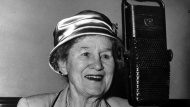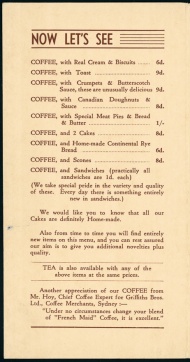Articles
Food in the 20th century
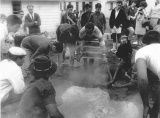
The pavlova - that frothy, baked confection of egg whites and sugar - has long been seen as an icon of New Zealand cuisine; its place of origin has been debated with Australians for just as long in one of the many instances of trans-Tasman rivalry.
-
Page 2 – Dining out
Before the 1960s, New Zealanders had a limited choice both of venue and of food if they wanted to dine out.
-
Page 3 – Seafood consumption
New Zealand is an island nation. Its inland and coastal waters support fish and shellfish in abundance.
-
Page 4 – Tea and coffee break
Tea was a 'great mainstay' of 'thirsty colonial New Zealand', the food historian Tony Simpson claims.
-
Page 5 – Fruit and vegetables
A house and garden on a patch of land were part of the 'New Zealand dream' for most of the 20th century.
Wellington cafe culture
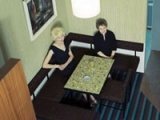
Café culture has become integral to Wellington's identity. This culture began in the 1930s with the emergence of the milk bar, followed by coffee houses in the 1950s. After a period of decline in the 1960s and 70s, the city's café scene has grown in spectacular fashion over the last 20 years.
-
Page 2 – Overview
Wellington city centre is renowned for its flourishing café scene and the culture it inhabits. But it was nearly 1950 before there was much sign of the sparkling capital
-
Page 4 – Immigration and Society
The rise of coffee houses in the 1940s, 50s and 60s was not a phenomenon confined to Wellington, or indeed to New Zealand. The connection between the history of cafe
-
Page 3 – Design and technology
New construction materials and equipment fashioned the cafe culture rising in the 1950s. Wellingtonians were introduced to the espresso machines as European styled cafes
-
Page 5 – Music and cafe culture
Entertainment generally and music in particular have always been a part of the Wellington cafe scene.
-
Page 6 – Personalities
New Zealand in the 1940s and 1950s has been described as a drab and uniform place. From the late 1950s, however, a café culture was established throughout the country.
-
Page 7 – Further information
Sources on Wellington cafe culture.
Life in the trenches
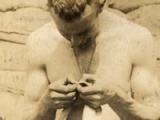
The daily tasks of life went on despite the hellish conditions of the Western Front trenches.
- Page 1 - Life in the trenchesThe daily tasks of life went on despite the hellish conditions of the Western Front
Christmas in New Zealand
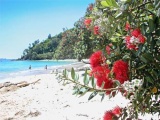
Christmas in New Zealand is less about snow and sleigh bells and more about sun, sand and backyard barbecues. Over the holiday season we explore the Kiwi Christmas experience –
from Abel Tasman’s first New Zealand Christmas in 1642 to the declining
reign of the Queen’s message- Page 1 - Kiwi ChristmasChristmas in New Zealand is less about snow and sleigh bells and more about sun, sand and backyard barbecues. Over the holiday season we explore the Kiwi Christmas experience –
School of Radiant Living
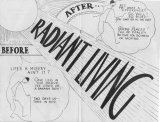
The School of Radiant Living was a movement active in New Zealand from the late 1930s until the late 1980s. Founder Dr Herbert Sutcliffe taught a holistic philosophy of physical, psychological and spiritual health.
-
Page 8 – The eliminating diet
To obtain physical fitness, it is of vital importance that the right mental attitude should accompany the food diet to enable the emotions, nerves and glands to co-operate
-
Page 9 – Salad recipes
Colour, beauty, exquisite artistry find joyous expression in the Art of Salad Making. The homemaker who serves salads so deliciously and artistically tempting that the
The North Island main trunk line
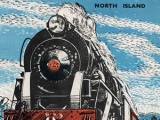
All aboard! The North Island main trunk railway was 100 years old in 2008. Take a trip back in time to explore the epic story of its construction, the heyday of the steam passenger train and the place of the iconic railway refreshment room in New Zealand life.
- Page 5 - RefreshmentsRefreshments are an essential and often talked about part of any train
Life in the 20th century
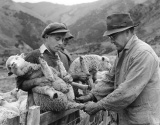
Exploration of everyday life in New Zealand from 1900 to the mid-1980s
- Page 7 - A land of plentyTypical New Zealand meals (particularly in the country) until at least the 1970s featured hearty morning and afternoon teas of homemade scones, biscuits and cakes; rich dinners of
Prisoners of War
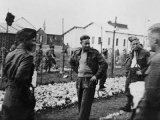
During the Second World War New Zealanders became prisoners of war in large numbers. Most Kiwi POWs were soldiers captured in Greece, Crete and North Africa. In total, more than 8000 were held in captivity - one in 200 of New Zealand's population at the time.
- Page 7 - Camp cookersA reprint of an article written by John Frizell (ex-POW) about the ovens used in POW camps during the Second World
The Gallipoli campaign
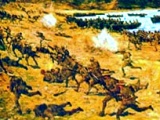
Each year on Anzac Day, New Zealanders (and Australians) mark the anniversary of the Gallipoli landings of 25 April 1915. On that day, thousands of young men, far from their homes, stormed the beaches on the Gallipoli Peninsula in what is now Türkiye.
- Page 7 - Soldiers' experienceLife for the New Zealand soldier on Gallipoli was tough. They struggled with the harsh environment, living and fighting amongst the deep ravines and high cliffs that towered above
Hospital ships
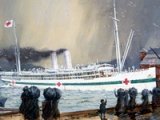
The Maheno and Marama were the poster ships of New Zealand's First World War effort. Until 1915 these steamers had carried passengers on the Tasman route. But as casualties mounted at Gallipoli, the government - helped by a massive public fundraising campaign - converted them into state-of-the-art floating hospitals.
- Page 4 - Civilians at GallipoliThe Maheno arrived in the Mediterranean in time for the Allies’ bloody late August 1915 offensives to find that not much had improved since the April
Related keywords
- health
- WW1
- western front
- fundraising
- 1970s
- alternative lifestyle
- exercise
- hospital ships
- gallipoli campaign
- maheno (hospital ship)
- casualties
- disease
- doctors
- drink
- recipes
- wellington city
- leisure
- cafes
- dining
- music
- beatles
- carmen
- factories
- radio broadcasts
- refugees
- bulgaria
- trenches
- balkans
- marines
- architecture
- tourism
- transport
- railways
- overlander
- trains
- refreshments
- railway stations
- taumarunui
- children
- prisoners of war
- shipping
- merchant marine
- gardening
- levin
- maori war effort
- lighthouses
- WW2
- paekakariki
- american forces
- cooking
- antarctica
- edmund hillary
- maori food
- seafood
- toheroa
- tongariro
- football
- all whites
- red cross
- queenstown
- fast food
- oral history
- aunt daisy
- picnics
- maud basham
- hangi
- fishing
- 1960s
- merchant navy
- seafarers
- WW2 stories
- six oclock swill
- alcohol
- james cook
- abel tasman
- christmas
- european discovery
- famous firsts
- passchendaele offensive
- belgium
- anniversaries
- public holidays
- christianity
- anzac
- uniforms
- weapons
-
Main image: 1970s household consumer items
Display of household consumer goods, mainly food, 1975


